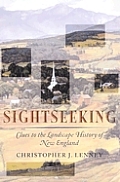In this posting, Chris discusses the origin of a name that has come to appear in maps and descriptions of the Battle of Lexington and Concord, but which the locals of 1775 didn’t use.
The mile-long ridge running parallel to Lexington Road from Meriam’s Corner to the center of Concord has long been a looming presence in the landscape and the history of the town. However, until the mid-twentieth century, it had no single, well-established name. At various times, various parts have been known as ye Hill above ye Meeting house, Meriam’s Hill, Heywood’s Hill, or simply the hill (or hills).
Its present name, Revolutionary Ridge, likely first appeared about 1915 and was popularized as the original name of Ridge Road. It was officially adopted by the U.S. Geological Survey on the 1943 Concord quadrangle map and has become widely accepted.
So anachronistic a name as Revolutionary Ridge has obvious drawbacks when recounting the events of April 19, 1775. It presupposes what hasn’t yet occurred. Something less glaringly modern, please!
Since the 1960s, Arrowhead Ridge, a name of even more recent coinage and one borrowed from another war, has come to fill the void. While a few arrowheads have coincidentally been found there, this is not how the name came about.
Arrowhead Ridge originated almost accidentally with military historian John R. Galvin, who brought a shrewd eye for terrain to the study of the battle. In the text of his book The Minute Men (1967), he employs the term purely descriptively—lowercase—four times:
- “A long ridge, shaped like an arrowhead, runs eastward from the center…The arrowhead points directly at Lexington”
- “At Meriam’s Corner, just below the east tip of the arrowhead ridge”
- “the British were preparing to march out along the arrowhead ridge”
- “climbing up the slope of the arrowhead ridge”
To illustrate Galvin’s account, Arrowhead Ridge was understandably, but misleadingly, given equal weight with other place names on the endpaper map of the first edition of his book. From there it slowly spread. A decade later Arrowhead Ridge resurfaced on a map in The Minute Men 1775–1975, a booklet published locally by the Council of Minute Men in 1977.
Relatively few have ever seen the original Galvin map, as most copies of the 1967 edition are now locked away in local history rooms and the map was omitted altogether from the much-revised and more widely available 1989 edition (although use of “arrowhead ridge” persisted in the text). Still fewer have seen the Council of Minute Men publication, which is something of a rarity.
However, virtually everyone interested in the events of April 19, 1775, has seen Arrowhead Ridge where it truly came into its own: on the map of the British retreat on page 223 of David Hackett Fischer’s now classic Paul Revere’s Ride (1994). Although not original to Paul Revere’s Ride, the influence of that book has assured that use of the term would survive and thrive: notably in Time-Life’s The Revolutionaries (1996). Nathaniel Philbrick’s Bunker Hill (2013), and Rick Atkinson’s The British Are Coming (2019). It has even made its way into a 2005 National Park Service report.
While Fischer refers to Galvin at least twenty-four times, the term Arrowhead Ridge never actually appears in the text of Paul Revere’s Ride. It was perhaps introduced by the cartographer, who compiled the map from Galvin and other sources. Its use is somewhat surprising in that Fischer twice takes exception to anachronistic terminology in his footnotes: Hardy’s Hill for Brooks Hill and, more famously, Bloody Angle for Bloody Curve. The latter is especially singled out for criticism as a Civil War name being reused for a battle in the Revolutionary War.
Ironically, in the use of Arrowhead Ridge we can see an example of much the same thing. Only in this case it was not a Civil War name that was borrowed, but one with ultimate origins in the Korean War.
We might ask whether Concordians of 1775 ever thought of that high ground as arrowhead-shaped since they weren’t used to picturing the world from above, the way we are in this era of widespread maps, plane travel, and satellite views.
Thanks, Chris!


Chris,
ReplyDeleteWe could also add to the anachronistic place names the term "Bloody Curve" that Fischer swaps for "Bloody Angle." That term (as Fischer notes) was invented by Ruth Wheeler as an alternative to Bloody Angle, in her 1967 book Concord: Climate for Freedom. There is sound documentation in Concord town records that the local name in the 18th century was Elm Brook Hill. The staff at the National Park now uses that term, and it is likely that as new Park maps and literature are issued, "Bloody Angle" will vanish, replaced by Elm Brook Hill.
Thank you for this interesting information, which was new to me. I went back to my The Minute Man and checked the map. I'm fortunate enough to have a first edition. Old like me. You mentioned Fischer's map maker. That was Andrew Mudryk, a very talented cartographer. Small world - his wife was one of my assistant registrars, years ago. Andrew is gone now, but I remember some beers with him. Thanks again for this new insight.
ReplyDeleteHi John!
ReplyDeleteI grew up on Revolutionary Road, off of Ridge Road. "Everyone" called the ridge "The Ridge."
I was born in 1961, so "everyone" includes the previous generation.
Just FYI.
Your blog is endlessly awesome!
-Bonnie Hurd Smith